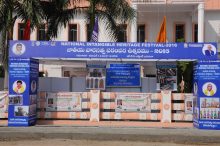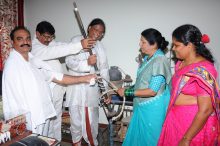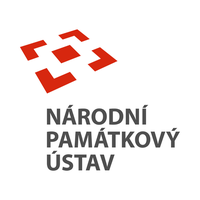Amaravathi Heritage Centre and Museum, India
The Vision
Amaravathi Heritage Centre and Museum affirms to serve a diverse society that reconciles and promotes the continuation and development of unique culture and heritage to the benefit of all Telugu people and, in so doing, to develop a uniquely Andhra model for sustainable heritage development.The Mission
As a demonstration and leadership project concerned with Andhra Pradesh' museums and heritage, the Amaravathi Heritage Centre and Museum in Amaravathi Heritage Town will provide leadership in the management of the state's diverse natural and cultural heritage for the enrichment of all people so as to:- develop and support an inclusive museums and sustainable heritage development practice in Andhra Pradesh;
- build the capacity for an effective museums and sustainable heritage industry in Andhra Pradesh;
- address and advocate critical concerns for the future of Andhra Pradesh' museums and sustainable heritage development.
Core Principles
Amaravathi Heritage Centre and Museum in Amaravathi Heritage Town will adhere to two international standard-setting instruments: Code of Ethics and the Cultural Diversity Charter of the International Council of Museums (ICOM), which is the largest professional heritage body in the world, based in Paris.1. DIVERSITY: To recognise and affirm all forms of cultural diversity and biological diversity at local, regional and international levels, and to reflect this diversity in all policies and programmes of museums across the world.
2. PARTICIPATORY DEMOCRACY: To promote enabling and empowering frameworks for active inputs from all stakeholders, community groups, cultural institutions and official agencies through appropriate processes of consultation, negotiation and participation, ensuring the ownership of the processes as the defining element.
3. COOPERATION AND COORDINATION: To cooperate and coordinate in sharing projects and enhancing professional exchanges so as to maximise resources and expertise at regional and global levels.
4. PEACE AND COMMUNITY BUILDING: To promote the sense of place and identity of diverse peoples through appreciating their multiple inheritances — natural and cultural, tangible and intangible, movable and immovable — and fostering a shared vision inspired by the spirit of reconciliation through intercultural and intergenerational dialogue.
5. INNOVATION AND INSPIRATION: To foster creativity and to develop challenging approaches to stimulate inclusive heritage consciousness in culturally and linguistically diverse museum contexts.
6. CAPACITY BUILDING: To make directed and sustained endeavours to increase the operational capacity of museums to respond with vigour and insight to transformation and change in culturally and linguistically diverse societies.
7. PRODUCTIVE DIVERSITY: To maximise approaches that will encourage the diversification of resources to address and reconcile the competing demands of cultural diversity and biodiversity with economic imperatives.
8. STANDARD SETTING: To discuss and debate various UN and UNESCO international heritage law instruments, both soft law recommendations, charters and declarations and hard law conventions and treaties, providing strategic professional leadership, especially with reference to the cultural suite of international legal instruments.
9. SUSTAINABILITY AND CLIMATE CHANGE: To locate culture as the fourth pillar along with economic, social and environmental sustainability and to address the cultural and creative dimensions of climate change.
10. DIGITAL DOMAIN: To understand the differences between digitisation, digital access and digital heritage, to support digital access in all activities, and to recognise that digital access is not a substitute for return, restitution and repatriation.
Permanent collections
A database of all the Buddhist collections is under development. Amaravathi is the birthplace of Mahayana Buddhism and has substantial movable and immovable cultural property for which the Museum is responsible.
Amaravathi Buddhist collections are all over the world, with the largest of them in the British Museum. In the next three years, the Amaravathi Heritage Centre and Museum aims to bring them together digitally and profile virtual reality to reanimate the collections.
View all Asia-Europe Museum Network (ASEMUS) members in India
Similar content
from - to
04 Oct 2017 - 04 Oct 2017
29 Aug 2018 - 19 Sep 2018
posted on
08 Oct 2018
from - to
29 Dec 2014 - 17 Jan 2015
posted on
05 Jun 2012





